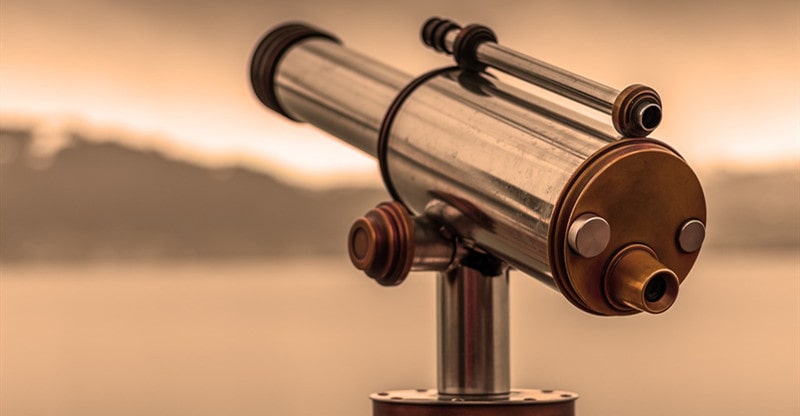4 Benefits of Owning a High Powered Telescope
A telescope is an ocular tool that allows us to observe distant objects by making them appear magnified by utilizing an assortment of lenses or curved mirrors and lenses, or various devices used to observe distant objects by their emission, absorption, or reflection of electromagnetic radiation.
The first recognized practical telescopes were refracting telescopes, which were developed in the Netherlands at the beginning of the 17th century, by using glass lenses. These telescopes were designed for both terrestrial and astronomical purposes.
The reflecting telescope, which utilizes mirrors to collect and focus light, was created a few decades later.
The 20th century saw an increase in the creation of telescopes, as numerous new types of telescopes were invented, including the radio and infrared telescopes.
Types of Telescopes
Many people have transformed their astronomical interests into hobbies and telescopes makes this possible by allowing us to look closely at the stars and taking photography of astronomical objects, celestial events, and areas of the night sky.
There are many different types of telescopes that will suit your specific needs. If this is one of your interests and you are looking for professional options as you intend on taking stargazing to a different level you must ensure you have the right equipment. There are many benefits to owning a high powered telescope, and in this article, we will discuss this.
Newtonian Reflector Telescopes
Newtonian telescopes usually use a bowl-shaped parabolic mirror to gather and focus incoming light onto a flat mirror, which reflects the image out of an opening at the side of the main tube and into the eyepiece.
Refractor Telescopes
Refracting telescopes are composed of a detached lens at the front of the tube. The light leaves out through the back of the tube to the eyepiece. This telescope also entails a right-angle diagonal mechanism in order to avoid neck strain of the user whilst also offering an upright image making them suitable for terrestrial observations.
A refractor telescope has several benefits compared to other types. The tubes are sealed off so that dust and moisture do not make their way into the tube, they have fixed optics that do not usually need collimation, and they do not have a central impediment which decreases the possibility of light entering the tube. The quality of the image by this telescope is usually of better quality than other designs.
Catadioptric Telescopes
Telescopes that use mechanisms combined with mirrors and lenses that are called catadioptrics. Normally this type will use a full aperture lens to correct abnormalities in a complex reflecting telescope. This lens also ameliorates the performance of the tool as air currents are removed.
Telescope’s Power
There are three main basic features of a telescope that allow for an extension of the power of our vision: a telescope’s greater ability to gather light enables us to see faded objects, a telescope’s greater resolution power allow us to see even the smallest of details, and the amplification power enables us to expand very small images.
Amplification is the unarguably the least significant power of a telescope. Both amateur and professional astronomers are aware that the light-gathering and resolution powers are the most essential. These two facilities ensure the visuals of the objective are exceptional.
Benefits
Light-Gathering Power
Light-gathering power is the telescope’s capacity to gather a lot more light than the human eye and is considered its most important feature. The telescope performs as a “light bucket”, gathering all of the photons that descend on it from a distant object.
The bigger the objective the more light the telescope will collect in a given time interval. This makes weak images brighter. Some highly distant faint objects can only be observed with large objective telescopes. Making faint images brighter is critical if the light is going to be dispersed to make a spectrum.
Another important factor of a high powered telescope is its capability to allow us to visualize the smallest of details as well as sharp images. This is due to its resolving power. This function allows us to use the telescope to view two objects in the sky separately, which otherwise to the naked eye they would appear to be a blur.
Better Than the Human Eye
The orifice of a telescope is several times larger than that of the human eye in order to allow for objects to be visualized, which would not be possible to the naked eye. The increased light-gathering power of a telescope is proportional to the area of its orifice and hence it depends on the square of the radius of the mirror. The larger the diameter telescope the more photos it is able to collect.
Ability to Record Light
A high powered telescope can be designed to record light over long periods of time, as it utilizes photographic film or electronic detectors such as photometers, whereas the human eye has no ability to store light. A long-exposure photo taken via a telescope can show objects too faint to be viewed with the eye, even when observing through the same telescope.
Focus on the Fine Details
Another major benefit of large high powered telescopes is that they entail superior resolution as well as the capability to distinguish fine details. A small resolution is beneficial. The resolution matches the wavelength being observed proportionally and it is contrariwise proportionate to the diameter of the telescope.
There are many different types of telescopes, although you should aim to invest in one with high power – this will increase the quality of your experience and will allow you to better enjoy the wonder that is the Universe.



